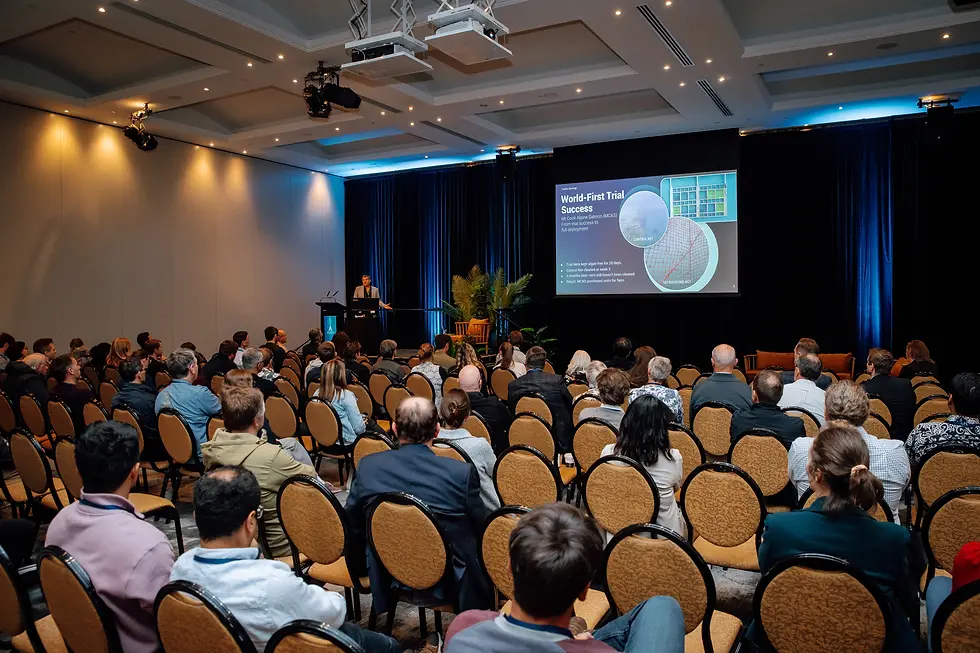Tackling Harmful Algal Blooms: Algae Control Causes, Impacts, and Solutions for New Zealand's Healthy Lakes and Ponds
- Ric Church
- Oct 4, 2024
- 4 min read
Updated: May 27
Tackling Harmful Algal Blooms in New Zealand: Understanding the Causes, Impacts, and Solutions for Healthy Lakes and Ponds
New Zealand is renowned for its stunning lakes and ponds, but there's a growing environmental concern that we need to address: harmful algal blooms (HABs). These vibrant green or sometimes reddish hues in our water bodies are more than just a visual issue; they indicate significant ecological and health risks. Let's dive into the causes, impacts, and potential solutions to this pressing problem.
Types of Algae Found in New Zealand Lakes and Ponds
1. Cyanobacteria (Blue-Green Algae): Often considered the most notorious, these algae can produce toxins threatening the health of humans, pets, and wildlife.
2. Green Algae: While they aren't toxic, excessive amounts can deplete oxygen levels in the water, endangering fish and other aquatic ecosystems.
3. Red or Brown Algae: Though less common, these can also contribute to water quality issues.
What Causes Algal Blooms?
Understanding the causes behind these algal blooms is crucial for developing effective management strategies. Here are the primary culprits:
1. Nutrient Runoff: Using fertilisers in agriculture, along with livestock manure and urban waste, increases nutrient levels in our lakes and ponds, fueling algae growth.
2. Climate Change: Warmer temperatures and shifting rainfall patterns create ideal conditions for algae blooms.
3. Sediment Disturbance: Erosion can increase sedimentation, providing algae nutrients to thrive.
4. Poor Water Circulation: Stagnant ponds and slow-moving lakes are prone to unchecked algal growth due to lack of water movement.

Cyanobacteria (Blue-Green Algae): The most notorious algae in NZ. It can produce toxins harmful to humans, pets, and wildlife.
Impacts of Algal Blooms
The consequences of these algal blooms are far-reaching, affecting both the environment and human health:
1. Water Quality Degradation: Algae can reduce oxygen levels, leading to dead zones where aquatic life cannot survive.
2. Health Risks: Cyanobacteria-produced toxins can cause skin rashes, respiratory issues, and digestive problems in humans and animals.
3. Economic Impact: Algal blooms can deter tourism, limit recreational activities like swimming and boating, and negatively affect local fisheries.
Solutions for Mitigation and Management
While the situation may seem grim, there are several strategies we can implement to combat harmful algal blooms effectively:
1. Ultrasonics: Using ultrasonic waves can disrupt algae cell structures, preventing their growth and allowing the lake's natural biome to restore itself.
2. Nutrient Reduction: To lower nutrient inputs into our water bodies, it's essential to manage the use of fertilisers and improve wastewater treatment.
3. Riparian Planting: Planting native vegetation or nitrogen-absorbing species along waterways can act as a buffer, preventing runoff and filtering excess nitrogen from entering lakes and ponds.
4. Aeration and Circulation Systems: Installing aerators can enhance water movement and reduce stagnation, helping to limit algae growth.
5. Algicides: While it's an option, using chemical treatments should be approached cautiously due to potential environmental impacts.
7. Mechanical Removal: Physically removing algae from water bodies through skimmers and other equipment can provide immediate relief.
The Role of Government and NGOs
Several entities in New Zealand are involved in monitoring and managing water quality:
- Regional Councils: These councils track water quality and can issue warnings or restrictions if toxic algal blooms are detected.
- Environmental Protection Agencies: The Ministry for the Environment (MfE) develops freshwater management policies and enforces nutrient level guidelines in our water bodies through the National Policy Statement for Freshwater Management (NPS-FM). www.environment.govt.nz
- NIWA (National Institute of Water and Atmospheric Research): This organisation conducts essential research and provides valuable data on freshwater quality and algal bloom occurrences.
Resources for More Information
If you're interested in learning more about the state of New Zealand's lakes and ponds, here are some valuable resources:
1. LAWA (Land, Air, Water Aotearoa): www.lawa.org.nz offers real-time data on New Zealand's water quality, including monitoring of algal blooms.
2. Ministry for the Environment (MfE): Check out www.environment.govt.nz for a wealth of reports and policies on water management.
3. NIWA: Visit www.niwa.co.nz to learn more about freshwater quality and algal blooms.
4. Regional Council Websites: Each region in New Zealand has local councils that monitor water quality, such as:
- Waikato Regional Council: Visit www.waikatoregion.govt.nz
- Canterbury: Visit www.ecan.govt.nz
5. Sciences Society of New Zealand: This society offers scientific insights into freshwater ecosystems and their health. Learn more at www.freshwater.science.org.nz
By understanding the causes, impacts, and potential solutions to harmful algal blooms in New Zealand, we can work towards healthier lakes and ponds for future generations. Together, we can tackle this environmental challenge and ensure our precious water bodies remain vibrant and safe!
Concerned about harmful algal blooms impacting your lake or pond? Explore effective solutions and get expert advice. Contact us directly at support@hydrosynergy.co.nz or call 0800 - NOALGAE (6625423) today.




Comments